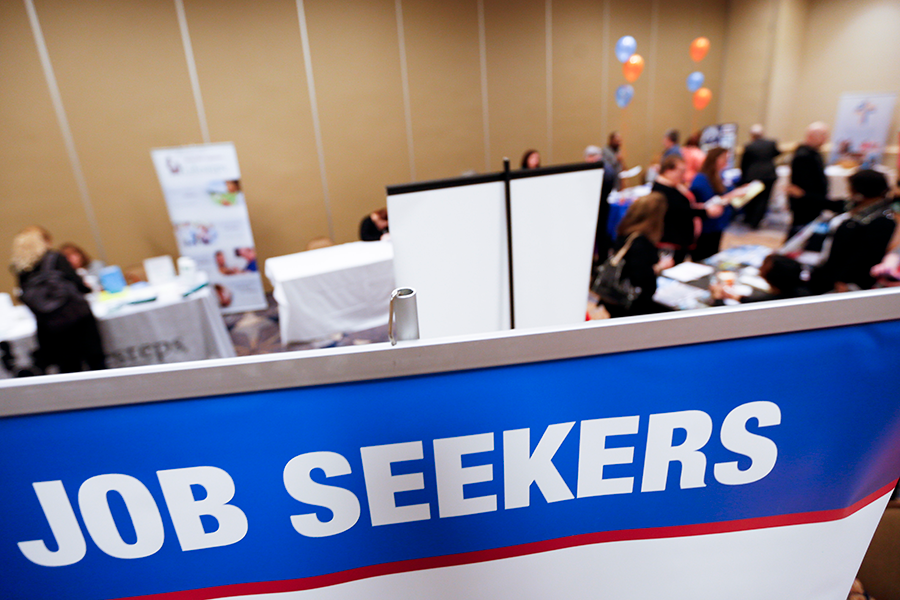Widespread jobs gains point to 'exceedingly healthy' labor market
Loading...
| WASHINGTON
US employers hired workers at a robust pace in February, beating expectations, and wages grinded higher, which could give the Federal Reserve the green light to raise interest rates next week despite slowing economic growth.
Nonfarm payrolls increased by 235,000 jobs last month as the construction sector recorded its largest gain in nearly 10 years due to unseasonably warm weather, the Labor Department said on Friday. The economy created 9,000 more jobs in December and January than previously reported.
Fed Chair Janet Yellen signaled last week that the US central bank would likely hike rates at its March 14-15 policy meeting. Job gains have averaged 209,000 per month over the past three months. The economy needs to create roughly 100,000 jobs per month to keep up with growth in the working-age population.
"By any measure this report is consistent with an exceedingly healthy labor backdrop and, I think more critically, it's a number that will embolden the Fed to raise rates in March," said Tom Porcelli, chief US economist at RBC Capital Markets in New York.
US short-term interest rate futures initially rose after the data, while prices of US Treasuries pared earlier losses. US stock index futures were trading higher, while the dollar was weaker against a basket of currencies.
Last month's brisk clip of hiring was accompanied by steady wage growth, with average hourly earnings rising 6 cents, or 0.2 percent. January's wage growth was revised up to 0.2 percent from the previous 0.1 percent gain. That lifted the year-on-year increase in wages to 2.8 percent from 2.6 percent in January.
The unemployment rate fell one-tenth of a percentage point to 4.7 percent, even as more people entered the labor market, encouraged by the hiring spree. Economists polled by Reuters had forecast employment increasing by 190,000 jobs last month.
The labor force participation rate, or the share of working-age Americans who are employed or at least looking for a job, increased one-tenth of a percentage point to 63 percent, the highest level since March 2016.
The employment-to-population ratio rose to 60 percent, the highest since February 2009, from 59.9 percent in January.
With the labor market near full employment, wage growth could speed up as companies are forced to raise compensation to retain employees and attract skilled workers.
According to economists, wage growth of between 3 percent and 3.5 percent is needed to lift inflation to the Fed's 2 percent target. But inflation is already firming, in part as commodity prices rise.
Rising inflation, together with a tighter labor market, stock market boom and strengthening global economy, has left some economists expecting that the Fed could increase rates much faster than is currently anticipated by financial markets.
The US central bank lifted its benchmark overnight rate in December and has forecast three rate increases for 2017.
Broad job gains
Job growth has averaged more than 186,000 per month since January 2010. While Donald Trump's victory in last November's presidential election sparked a stock market rally and jumps in consumer and business confidence, there has been no surge in either business or consumer spending.
Data ranging from trade to consumer and business spending suggest the economy slowed further early in the first quarter after growing at a 1.9 percent annualized rate in the final three months of 2016. The Atlanta Fed is forecasting gross domestic product growing at a 1.2 percent rate this quarter.
A broad measure of unemployment that includes people who want to work but have given up searching and those working part-time because they cannot find full-time employment fell two-tenths of a percentage point to 9.2 percent last month.
All sectors of the economy, with the exception of retail and utilities, expanded payrolls in February. Manufacturing employment increased 28,000, the largest gain since August 2013, as rising oil prices fanned demand for machinery.
Construction payrolls surged 58,000, the biggest gain since March 2007, boosted by warmer weather.
Retail sector employment fell 26,000, the biggest decline since December 2012, after a gain of 39,900 jobs in January. Retailers including J.C. Penney Co Inc and Macy's Inc have announced thousands of layoffs as they shift toward online sales and scale back on brick-and-mortar operations.
Utilities shed 1,000 jobs last month because of the milder weather.
Government payrolls increased by 8,000 jobs despite a freeze on the hiring of civilian federal government workers that went into effect in January.





